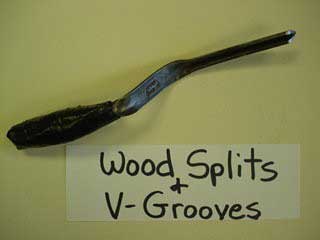Getting a Table-Top Finish Perfectly Smooth
How do you get a conference table top dead flat and smooth, with a glossy finish? Construction, finishing, and sanding all play a role. December 27, 2006
Question
We are spraying high gloss finishes on large conference tables. We applied the last coat and the wood now looks wavy. Itís not the finish itself - I think itís the way I am sanding. I am using a Festool orbital sander with 600 grit but I think I am doing it unevenly. How do people sand large areas for high gloss? Do people use Webers or Timesavers?
Forum Responses
(Finishing Forum)
From contributor A:
I can't be sure from here but I doubt that you are introducing much contouring with your Festool and 600 grit paper. It seems much more likely that you are just now able to see wavy contours that were created several steps back in the process. 600 grit paper won't dig in much unless you really work at it. It could also be that you are simply not fully polished yet. 600 grit is a sort of starting point for a gloss leveling and you may be seeing just the swirl patterns and not contours at all. Can you check the surface with a nice straight edge for any dips or ridges? That will narrow down the possibilities.
From contributor B:
Your last coat is only as level as your first coat was sanded. More than likely the waves were there and you didn't see them. A dual pad inline sander is usually what is used to level surfaces.
From the original questioner:
This is under discussion in our shop. I am heavy handed when it comes to sanding. You are right about the 600 grit. Do you think it could be in the building process as well? We send things through the Timesaver but final sanding is done by hand with belt sanders and orbitals.
From contributor A:
The building process is certainly an area that I would be suspicious of. I have had problems with various plywoods having factory created surfaces that were pretty far from acceptably flat. In addition, plywood tops and cases are often biscuited and these biscuits often cause distressingly obvious bumps. Figured veneers are usually a source of thickness variation and sanding is but a minimally successful way to address these flatness issues. There are lots of possibilities. Careful observation and investigation is needed to winnow to the specific issue that is creating this particular problem.
In the interim gentle up with your sander - efficient skill, not brute force, is the proper approach.
From contributor C:
As an automotive painter I know a lot about glossy finishes. First, the only wood product worth a damn for a full gloss finish is MDF. If you're making conference table tops make sure that the plywood you're using is either MDF core or Classic Core II which has MDF banding under the veneer. This is mandatory. The only alternative is a thick coat of polyester surfacer sanded flat using a mud hog followed by a Stur or National Detroit dual pad straight line sander. I use these all the time for full polished painted finishes and they are absolutely essential to achieve the level of flatness required.
From contributor D:
First and simplest things first. Has the finish been polished out yet? From your post, you seem to have only gotten to 600 grit. Try illuminating the top with a raking light from a low angle. This usually reveals a lot. A good straightedge might show if there are highs and lows, but these would have to be pretty large for a straightedge to reveal them. If variations are large enough to be shown by a straightedge, the problem's difficult to fix at the finishing stage. A previous poster's suggestion of leveling using polyester surfacer can work, but this is a difficult solution to execute successfully. If you choose that approach, carefully read the MSDS for the polyester product you use. Both the volatiles (solvents, etc.) in the wet product and the sanding dusts may be quite hazardous. Before attempting to level the top with a surfacer, I would continue to higher grits (800 - 1000 - 1200, etc.) and see if the problem disappears. One of the other poster's suggestions of using a dual pad inline sander is one I would also use. They work well for leveling surfaces. I also agree with one of the other posters that the easiest way to a flat surface is to use MDF core veneer. Last, I'll repeat what another poster mentioned: use a light hand: just enough to control the sander - and, keep it moving. If the sander you're using is a 6" RO with an offset motor and vacuum dust pickup, try placing one hand around the sander just above the pad area, and balancing the sander by gripping the vacuum hose just beyond the body. Apply light pressure only, and let the sander do the work. Good luck.
From the original questioner:
Everybody was right in their own little way. The build process needs to change, I need to lighten up my sanding a lot, and the inline sander works like a charm. I love this forum!
From contributor E:
What is a mud hog??
From the original questioner:
It is a sander - National Detroit carries these, to help level finishes.
